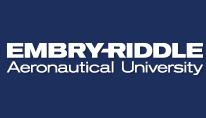T4-D: Development and Delivery of a Multidisciplinary Online Course on Unmanned Aircraft Design
Location
Richard Petty
Start Date
6-3-2018 8:40 AM
Description
The design of unmanned aircraft systems is a multidisciplinary activity across a variety of subsystems both onboard the unmanned aircraft and its ground-based infrastructure. Within the UAS domain, the airworthiness of the designed system must be addressed through across the engineering and product lifecycles. This paper discusses a new course at Embry-Riddle Aeronautical University (ERAU), UAS 501: Introduction to Unmanned Aircraft Design. The course was delivered to ERAU students as part of the Master of Science in Unmanned and Autonomous Systems Engineering program and to a cohortbased ERAU Certificate of Study in Airworthiness Engineering program in partnership with Northrop Grumman Corporation. The paper will address the curriculum, its delivery, and the insights gained in educating a mixed-cohort of traditional and non-traditional students from a variety of engineering academic and professional backgrounds through both synchronous and asynchronous distance delivery
T4-D: Development and Delivery of a Multidisciplinary Online Course on Unmanned Aircraft Design
Richard Petty
The design of unmanned aircraft systems is a multidisciplinary activity across a variety of subsystems both onboard the unmanned aircraft and its ground-based infrastructure. Within the UAS domain, the airworthiness of the designed system must be addressed through across the engineering and product lifecycles. This paper discusses a new course at Embry-Riddle Aeronautical University (ERAU), UAS 501: Introduction to Unmanned Aircraft Design. The course was delivered to ERAU students as part of the Master of Science in Unmanned and Autonomous Systems Engineering program and to a cohortbased ERAU Certificate of Study in Airworthiness Engineering program in partnership with Northrop Grumman Corporation. The paper will address the curriculum, its delivery, and the insights gained in educating a mixed-cohort of traditional and non-traditional students from a variety of engineering academic and professional backgrounds through both synchronous and asynchronous distance delivery


